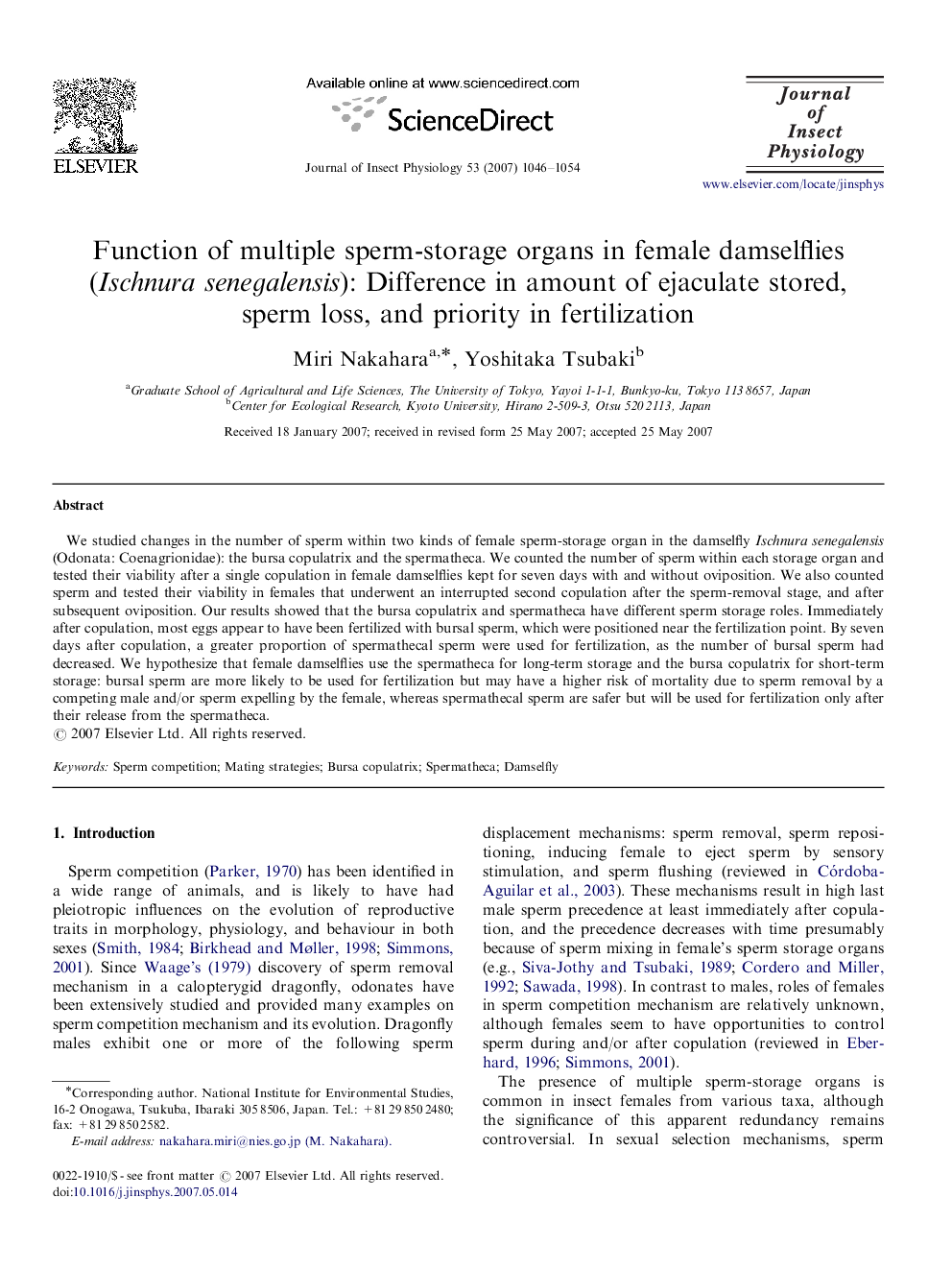| Article ID | Journal | Published Year | Pages | File Type |
|---|---|---|---|---|
| 2841453 | Journal of Insect Physiology | 2007 | 9 Pages |
We studied changes in the number of sperm within two kinds of female sperm-storage organ in the damselfly Ischnura senegalensis (Odonata: Coenagrionidae): the bursa copulatrix and the spermatheca. We counted the number of sperm within each storage organ and tested their viability after a single copulation in female damselflies kept for seven days with and without oviposition. We also counted sperm and tested their viability in females that underwent an interrupted second copulation after the sperm-removal stage, and after subsequent oviposition. Our results showed that the bursa copulatrix and spermatheca have different sperm storage roles. Immediately after copulation, most eggs appear to have been fertilized with bursal sperm, which were positioned near the fertilization point. By seven days after copulation, a greater proportion of spermathecal sperm were used for fertilization, as the number of bursal sperm had decreased. We hypothesize that female damselflies use the spermatheca for long-term storage and the bursa copulatrix for short-term storage: bursal sperm are more likely to be used for fertilization but may have a higher risk of mortality due to sperm removal by a competing male and/or sperm expelling by the female, whereas spermathecal sperm are safer but will be used for fertilization only after their release from the spermatheca.
